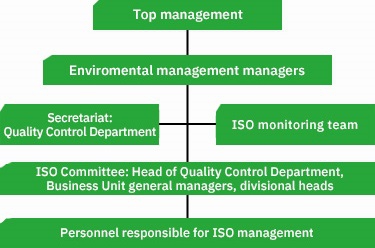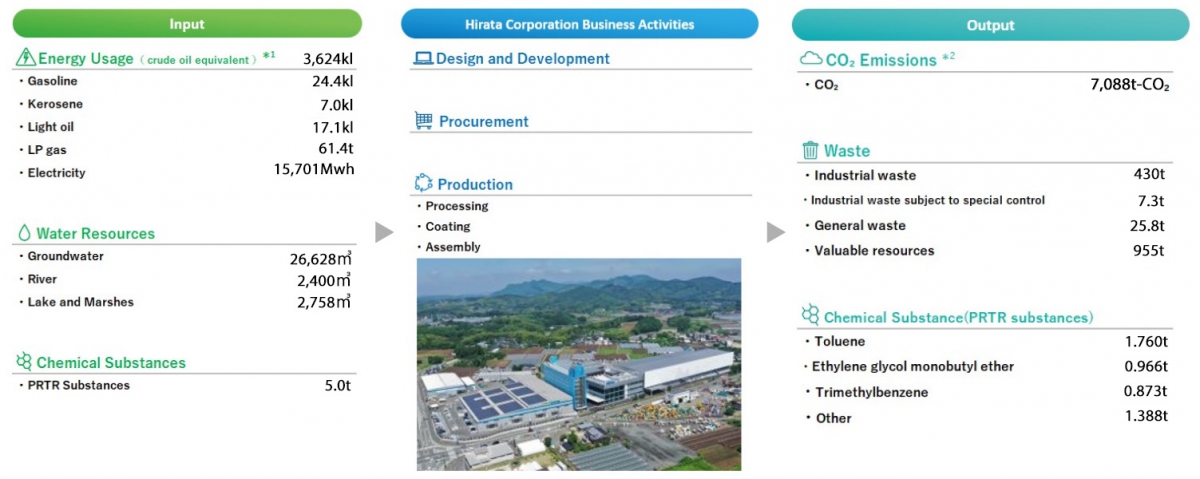Environmental Management
We at Hirata establish environmental policies and promote environmental activities in line with those policies. We will contribute to protecting the global environment by reducing the environmental load in all aspects of our business activities, products, and services.
To further support these initiatives, we have established an Environmental Management System (EMS) framework and obtained ISO 14001 certification at each of our production sites, in accordance with international standards.
Particulars of Our Environmental Policy
Hirata Corporation contributes to protecting the global environment by reducing the environmental load in all aspects of our business activities, products, and services in order to achieve a sustainable society.
-
We lower the environmental load of our products by considering each phase of a product’s lifecycle throughout our supply chain, from raw material sourcing to design, production, transportation, use of the product, and its disposal after use.
・Making products that save more energy when in use
・Designing and manufacturing products to be recyclable at disposal and promotion of Manufacturing
・Reducing the amounts of harmful materials used in our products and using substitutes -
We abide by environmental laws, treaties, requirements, and voluntary standards set as needed. We also develop coordination and cooperative relations with relevant government agencies and contribute to local communities.
-
We strive to improve productivity and conserve the environment throughout all our business activities and production processes, including sales, design, manufacturing, installation, and after-sales service.
・Reducing energy usage and emissions of greenhouse gases
・Reducing waste and promoting recycling
・Reducing harmful materials and using substitute articles
・Preventing environmental problems and pollution
・Preserving biological diversity -
We increase environmental awareness by implementing education and publicity programs.
-
We review our EMS regularly to enhance environmental performance while striving for continuous improvement.
Environmental Management Promotion Framework
Status of Business Activities and Environmental Impact
Environmental impact in FY2024 was as follows.
※1 Calculated using conversion coefficients for fuel, gas, and electricity in accordance with the Law Concerning the Rational Use of Energy and the Conversion to Non-Fossil Energy.
※2 The CO2 emissions associated with electricity consumption are calculated based on the adjusted emission factors for each electric power company.
(Note) Hirata Corporation non-consolidated data
Company-wide Environmental Goals
| No. | item | Significant Environmental Aspects | Company-wide Goals (Medium- to Long-term Goals) | |
|---|---|---|---|---|
| 1 | Global Warming Prevention | Reduction of Energy Consumption |
・Electricity Use and Reduction |
Reduce energy consumption by more than 3% per unit of actual production compared to FY2024 levels by the end of FY2027. |
| Reduction of CO₂ Emissions |
・Electricity Use and Reduction |
Reduce CO₂ emissions by more than 3% per unit of actual production compared to FY2024 levels by the end of FY2027 (through energy consumption reduction). | ||
| 2 | Effective Utilization of Resources | Reduction of Water Consumption | ・Groundwater Use and Reduction ・Water Use and Reduction |
Reduce water consumption by more than 3% per unit of actual production compared to FY2024 levels by the end of FY2027. |
| 3 | Reduction of Industrial Waste Generation | ・Industrial Waste Generation and Reduction | Reduce industrial waste emissions by more than 3% per unit of actual production compared to FY2024 levels by the end of FY2027. | |




